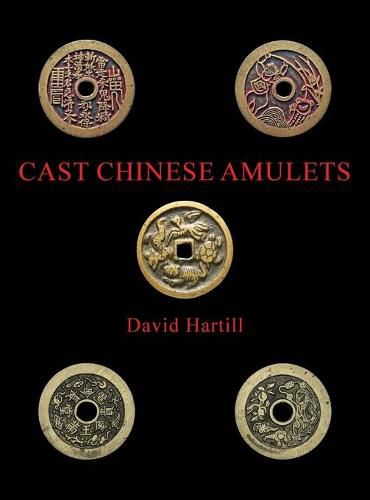Readings Newsletter
Become a Readings Member to make your shopping experience even easier.
Sign in or sign up for free!
You’re not far away from qualifying for FREE standard shipping within Australia
You’ve qualified for FREE standard shipping within Australia
The cart is loading…






This title is printed to order. This book may have been self-published. If so, we cannot guarantee the quality of the content. In the main most books will have gone through the editing process however some may not. We therefore suggest that you be aware of this before ordering this book. If in doubt check either the author or publisher’s details as we are unable to accept any returns unless they are faulty. Please contact us if you have any questions.
For over 2,000 years, the Chinese have been producing amulets in the shape of flat metal objects, usually cast in brass or bronze, some shaped like the traditional square-holed cash coins, others in a variety of fancy shapes, promising good luck in various fields, the turning away of evil influences, or conveying religious sentiments. Some have inscriptions taken from the Classics of 500 BC.
Previously, catalogues of these amulets were arranged in various different ways - by shape, size, meaning, Emperor’s name, or a common feature. However, this made it difficult to locate a particular piece - it would not be immediately clear to a non-expert whether a piece was Lucky , Religious , Family or Coin .
This catalogue is designed for ease of identification. It is divided into four sections - Openwork, Pictorial, Zodiac, and Inscriptions. Preceding the detailed catalogue for each section is a Finding Guide which is arranged by salient features, or by the first character of the inscription. There is also a section which lists inscriptions that might not be clear as they are in non-standard scripts or lay-outs. In the catalogue there is a brief description of the piece, the inscription (if any) in Chinese characters and Pinyin, and a translation, explanation, and source.
Over 5,000 amulets are included in the catalogue. Together they provide a fascinating insight into traditional Chinese beliefs and aspirations.
$9.00 standard shipping within Australia
FREE standard shipping within Australia for orders over $100.00
Express & International shipping calculated at checkout
This title is printed to order. This book may have been self-published. If so, we cannot guarantee the quality of the content. In the main most books will have gone through the editing process however some may not. We therefore suggest that you be aware of this before ordering this book. If in doubt check either the author or publisher’s details as we are unable to accept any returns unless they are faulty. Please contact us if you have any questions.
For over 2,000 years, the Chinese have been producing amulets in the shape of flat metal objects, usually cast in brass or bronze, some shaped like the traditional square-holed cash coins, others in a variety of fancy shapes, promising good luck in various fields, the turning away of evil influences, or conveying religious sentiments. Some have inscriptions taken from the Classics of 500 BC.
Previously, catalogues of these amulets were arranged in various different ways - by shape, size, meaning, Emperor’s name, or a common feature. However, this made it difficult to locate a particular piece - it would not be immediately clear to a non-expert whether a piece was Lucky , Religious , Family or Coin .
This catalogue is designed for ease of identification. It is divided into four sections - Openwork, Pictorial, Zodiac, and Inscriptions. Preceding the detailed catalogue for each section is a Finding Guide which is arranged by salient features, or by the first character of the inscription. There is also a section which lists inscriptions that might not be clear as they are in non-standard scripts or lay-outs. In the catalogue there is a brief description of the piece, the inscription (if any) in Chinese characters and Pinyin, and a translation, explanation, and source.
Over 5,000 amulets are included in the catalogue. Together they provide a fascinating insight into traditional Chinese beliefs and aspirations.